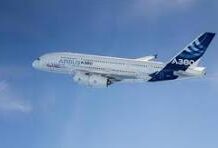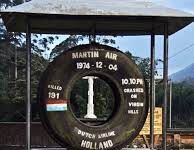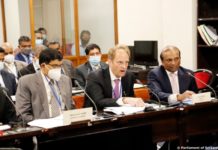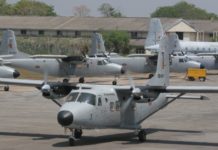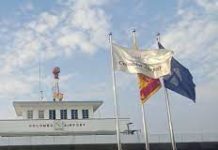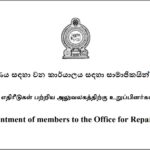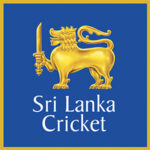By: Capt Gihan ‘GAF’ Fernando
Compared to other Airlines British Overseas Airways Corporation (BOAC) had uneconomical
over powered, fuel guzzling aircraft in its fleet, essential to operate into hot, high and humid airports of the British Commonwealth that had short Runways. It seemed as if connectivity was more important than profit. In 1955 the requirement for Vickers Civil Jet program in Britain had been cancelled by the management of BOAC. There was no replacement planned for the existing Comet 4C and Bristol Britannia aircraft. As a result BOAC was running at a loss.
When the Boeing 707 passenger jet aircraft were introduced by Pan American Airlines of USA, the BOAC Management was also keen on acquiring the same type of aircraft with a few modifications and with more economical Roll Royce Convey 12 engines as against the Pratt and Whitney JT3D engines that the original American aircraft had. So in 1956 BOAC ordered fifteen B 707 aircraft which needed longer runways to land and Take-off. Subsequently, after an uproar in the British Parliament BOAC was forced to also order seventeen Vickers VC 10’s as well. But that’s another story! The American B 707 aircraft thus ordered were inducted into BOAC service in 1960.
As far back as 1947 Pan American had two flights originating from USA, going around the
world. One went west bound from San Francisco (call sign, ‘Yankee Clipper 001’) and the other (call sign ‘Yankee Clipper 002’) went east bound from New York, with multiple stops. They usually crossed each other somewhere over Lebanon in the Middle East, going in opposite directions. After acquiring the B 707 aircraft BOAC too followed suite with one B 707 going east bound from England across Europe and Asia, and the other west bound across the Atlantic and around the world. Jet aircraft were operated like stage coaches of old. They were kept continuously flying, after a change of crew (like changing horses!) and refuelling, at the end of each stage.
This is the story of a west bound BOAC B 707 aircraft (Call sign Speed bird 911). The year1966 was a bad year for Air Safety in Japan. In fact that year, there were four fatal crashes and two within 48 hours. On the evening of 4th March 1966, the Tokyo Haneda International Airport, was ‘boxed in’ with bad weather due to an area of low pressure overhead resulting in fog, rain and low visibility. The Captain of a Canadian Pacific aircraft circling over Japan and waiting to land, decided to divert to Taiwan as the weather conditions were bad and not improving. However, Air Traffic Control in Tokyo then told them that the weather was observed to be improving. So they decided to carry out an approach that resulted in a fatal deviation from the glide path and the Douglas DC 8 aircraft, undershot, hitting the some approach lights and a sea wall before crashing into the airport premises in flames.
That same night a BOAC ‘Speed bird 911’ registered as G-APFE, B 707 aircraft from Honolulu Hawaii diverted to Fukuoka, Japan as the weather was better there. It was mid-day on 5 th March when they arrived at the Tokyo Haneda International Airport which was their original destination. Now the weather had passed and the skies were Blue. The next ‘stage’ of the around the world flight was Tokyo to Kai Tak Airport, Hong Kong under the command an experienced 45 year old, Captain named Bernard Dobson (DFC & Bar) from Dorset. He had been an ex WWII pilot, flying B 707 aircraft since 1960.
That day, since the skies were clear (after the storm) they could see 12388 foot Mount Fuji
(Fujisan) from the airport, they taxied past the still smouldering wreckage of the Canadian
Pacific aircraft that crashed the night before. I am sure that everyone felt safe as lightning
never strikes the same place twice and accidents always happen to other people.
The low pressure system had given way to a high pressure system associated with high wind speeds. As Airline Captains sometimes do, Capt Dobson decided to give his passengers a flight past the crater of Mount Fuji at 16,000ft and at a speed between 320 to 370 knots in a slight decent. The aircraft then suddenly encountered severe turbulence close to Mount Fuji. With the extremely heavy turbulence the vertical tail fin broke and hit the left Elevator which broke in turn. Next the four underslung engines of the B 707 got wrenched out of the wing. The fuel started leaking in the form of a fine mist into the air and the aircraft went into an unrecoverable flat spin. The fuselage broke from near the Flight Deck just before impact. The debris were scattered 16 miles across. All 113 passengers and 11 crew members lost their lives. The Flight Deck was destroyed by fire along with the Flight Data Recorder (FDR). There was no requirement by law to have a Cockpit Voice Recorder (CVR) installed, those days.
These two devices were collectively called the ‘Black Box’ and would have helped with the
accident investigation. G-APFE in a Flat Spin with Turbine Fuel spewing out The Accident Investigation The two accident investigators dispatched from Britain didn’t have any hard evidence from the ’Black Box’ which was destroyed by fire. However, there were many eye witnesses and photographs of the unfortunate event to go on. There was also an 8mm Cine Camera with which a passenger was filming through a window and was recovered from the wreckage. When the film was developed and examined, the investigators noticed that the camera had jumped two frames just before falling on the aircraft floor. On further investigation it was found that for the two frames to jump, a shock force of plus 7.5 G had to be administered to this compact and sturdy machine. (G being the force of Gravity).
Extreme turbulence was also confirmed by another US Navy Douglas Skyhawk jet fighter aircraft that went looking for the BOAC wreck on the mountain side, immediately afterwards and experienced severe turbulence and had pulled plus 9G and minus 4G. While jet fighters are built to withstand high G forces, big passenger jets are not built that way and are not as strong. Although they can withstand more, passenger aircraft are certified to only up to about plus 2.5 G. Capt Dobson didn’t have a chance at that speed he was travelling in clear air. There was a possibility circulation of clear air in a rotary action (curling inwards) on the downwind (Leeward) side of the mountain.
This event was very similar to a vehicle at high speed hitting an abnormally high road bump that could result in mechanical failure Although discovered by two glider pilots, back in1933, even at this point of time in 1966, very little was known about the meteorological
phenomenon call ‘Mountain Waves’ and their effect on relatively new swept wing passenger
jet planes which still had some flying characteristics which baffled the Airline pilots and the
Aeronautical engineers.
Air, being a fluid like water, on windy days get disturbed by obstacles like mountain ranges,
similar to what occurs when river water flows over rocks creating turbulent ‘White water’.
The essential difference is that one can see White Water, but Mountain Waves will be invisible more often than not. On other occasions there will be cloud of peculiar shapes which will give the pilots a warning. Capt. Dobson had no warning whatsoever and the sky was clear, till it was too late with the onset of turbulence. Interestingly, several booked passengers decided to cancel their flight on BOAC 991 at the last moment in order to see a ninja demonstration. These passengers, Albert (Cubby) Broccoli, Harry Saltzman, Ken Adam, Lewis Gilbert and Freddie Young, were in Japan searching for locations for the fifth James Bond film, You Only Live Twice.
These accident and incident investigation reports helped to formulate and fine tune Standard Operating Procedures (SOP’s) through the years to make Airline operations safe. Today’s Airline Pilots are taught reduce their speed as soon as they experience Clear Air Turbulence (CAT) so that they can ride the bumps. There are ‘Turbulence speeds’ now defined for Jet Aircraft which work very well. If they anticipate turbulence, they told to slow down early in anticipation. Now the curriculum for Meteorology studies for the Commercial Pilots’ Licence discusses extensively ‘Mountain Wave Turbulence’ and tell-tale signs of their presence by observing cloud formations and the best (quickest) way to transit such areas.
Macarthur Job in his book ‘Air Disaster’ Volume 1, mentions that there is a traditional
Japanese proverb which says that “When the sky is blue Fuji is angry” This holds good even
today. Twenty years or so after this accident, I was flying from Narita to Fukuoka via Mount
Fuji in a Lockheed L 1011 Tri-Star aircraft at 30,000ft climbing at 300 feet per minute, in clear blue weather, when suddenly the rate of climb shot up to over 2000 feet per minute. Mount Fuji was right below us. At altitudes below us the turbulence would have been much worse.
Because of the extensive studies and analysis done on the accident of BOAC 911, my crew
and I were fully prepared for it. (Forewarned is forearmed) Today the Flight Data Recorders and Cockpit Voice Recorders are installed in the tail of an aircraft in fire proof, shock proof containers. The passenger seats can withstand 12G’s. The passengers are advised to have their seatbelts fastened whenever they are seated. The Pilots are taught to avoid (avoid, avoid, avoid) situations of heavy turbulence by being proactive, preventive and predictive for safety’s sake.
Courtesy : Capt. G A Fernando MBA, [email protected] and compiled by Gp Capt (Retd) Kuma Kirinde




